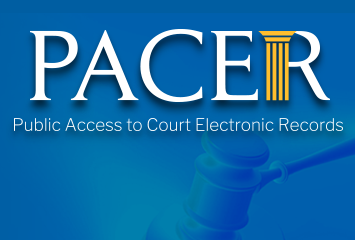Takeaways from the CBO Score of the "Free PACER" Bill
1. The Open Courts Act would significantly reduce the cost of storing and accessing court records over the next decade.
 “Over the 2022-2032 period,” the CBO writes, “[…] the phaseout of the old system would generate savings of $343 million” (p. 6). Amazing.
“Over the 2022-2032 period,” the CBO writes, “[…] the phaseout of the old system would generate savings of $343 million” (p. 6). Amazing.
Elsewhere, the agency says the bill would add $77 million to the deficit over 10 years. But, this figure is based on an assumption of reduced economic activity, and reduced tax revenue of $101 million, that “free PACER” would produce. We believe the opposite — that free PACER is more likely to lead to greater economic activity and greater tax revenue, especially in legal tech.
2. No matter what, access to court records should cost a lot less. The CBO acknowledges this and believes the Open Courts Act can make it happen.
The judiciary is spending $64 million this year to maintain its system of static PDFs (p. 6). That’s unacceptable. The CBO says the judiciary could do it for $15 million per year, which is far better.
3. Unfortunately, the CBO overestimates the costs of several key components of moving to a new system.
For example, the agency says it’d cost the judiciary $82 million for “cloud storage, software licenses, database management, hardware, and migrating existing data from old databases to the new system.” There’s no way that number is close to reality. Storing two billion court records to the cloud — about twice what PACER holds today — would cost $225,000 per year according to Free Law Project’s Mike Lissner (p. 8). Additionally, the CBO presumes that 12 development teams of up to 10 people each would set up the new system and six development teams of 10 people would maintain it. This human capital would cost $180 million. But, under no circumstances does the U.S. Courts need so many humans to move from the old system to the new one!
Sadly, these inflated costs bleed into other sections of the score, namely the amount of money the judiciary would need to charge high-volume users for access to PACER and how much they’d need to increase filing fees. Our estimates are much, much lower.
4. The CBO tries to scare you with a big number on page 1. Don’t be scared.
The score says that the bill might lead to $493 million in new appropriations over the next 10 years. This is because PACER would no longer be paying for things like bankruptcy notices, flatscreens in jury boxes and other things that PACER was never intended to pay for. So, Congress could simply zero this out, and there’d be no deleterious impacts on the third branch budget — just less of a slush fund for pet projects. That’s a win-win.